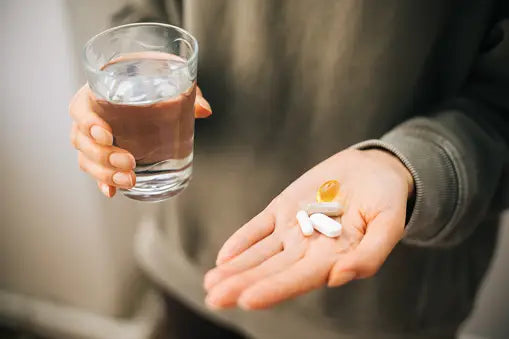

Advanced Muscle Recuperation Supplementation
Table of Contents
DHEA Enhances Muscle Recuperation
Like testosterone, the production of DHEA peaks in the mid-twenties and then declines steadily with age after 30 years old. This decrease stimulated significant interest in a potential role for a steroid deficiency state in aging. Dehydroepiandrosterone is produced primarily by the adrenal glands and gonads that act as precursors in the endogenous production of testosterone and estrogen. Virtually all sex steroids in the human body are made from DHEA, which is the most abundant steroid hormone in circulation. Little is known about the effects of DHEA administration and muscle recuperation, so researchers set out to examine the effects of five days of intense exercise and DHEA administration.

During 5-day successive exercise training, 16 young male participants received either a placebo or DHEA (100 mg/day) in a double-blinded and placebo controlled design. The subjects took 50mg of DHEA at breakfast and dinner for a total of 100 mg per day. The training protocol consisted of a 40 minute run at 65% of a max HR, followed by a resistance exercises protocol that consisted of 5 exercises (upper body and lower body) for three sets of twelve repetitions.
At the end of the study, oral DHEA supplementation significantly increased circulating DHEA-S by 2.5-fold, but a protracted drop (~35 %) was observed from Day 3 during training. In the placebo group, only a minimal DHEA-S reduction (~17 %) was observed. Changes in testosterone followed a similar pattern as DHEA-S. Muscle soreness was elevated significantly on Day 2 for both groups to a similar extent. Lower muscle soreness was observed in the DHEA-supplemented group on Day 3 and Day 6. In the placebo group, training increased circulating markers of muscle damage (creatine kinase) levels by approximately ninefold, while only a threefold increase was observed in the DHEA-supplemented group. This mix-type exercise training improved glucose tolerance in both groups while lowering the insulin response to the glucose challenge, but no difference between treatments was observed. The results suggest that DHEA-S may play a role in protecting skeletal muscle from exercise training-induced muscle damage.
Liao YH, Liao KF, Kao CL, Chen CY, Huang CY, Chang WH, Ivy JL, Bernard JR, LeeSD, Kuo CH. Effect of dehydroepiandrosterone administration on recovery from mix-type exercise training-induced muscle damage. Eur J Appl Physiol. 2013 Jan;113(1):99-107.
Powers ME. The Safety and Efficacy of Anabolic Steroid Precursors: What is the Scientific Evidence? Journal of Athletic Training. 2002;37(3):300-305.
Baulieu E E. Dehydroepiandrosterone (DHEA): a fountain of youth? J Clin Endocrinol Metab. 1996;81:3147–3151.
Longcope C. Dehydroepiandrosterone metabolism. J Endocrinol. 1996;150(Suppl):125.
Orentreich N, Brind J L, Vogelman J H, Andres R, Baldwin H. Long-term longitudinal measurements of plasma dehydroepiandrosterone sulfate in normal men. J Clin Endocrinol Metab. 1992;75:1002–1004.

















